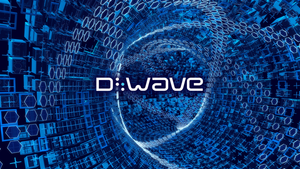
The artificial intelligence revolution is accelerating at an unprecedented pace, and at its core lies a burgeoning demand for specialized AI chips. This insatiable appetite for computational power, significantly amplified by innovative AI startups like Groq, is positioning established semiconductor giants Nvidia (NASDAQ: NVDA) and Advanced Micro Devices (NASDAQ: AMD) as the primary beneficiaries of a monumental market surge. The immediate significance of this trend is a fundamental restructuring of the tech industry's infrastructure, signaling a new era of intense competition, rapid innovation, and strategic partnerships that will define the future of AI.
The AI supercycle, driven by breakthroughs in generative AI and large language models, has transformed AI chips from niche components into the most critical hardware in modern computing. As companies race to develop and deploy more sophisticated AI applications, the need for high-performance, energy-efficient processors has skyrocketed, creating a multi-billion-dollar market where Nvidia currently reigns supreme, but AMD is rapidly gaining ground.
The Technical Backbone of the AI Revolution: GPUs vs. LPUs
Nvidia has long been the undisputed leader in the AI chip market, largely due to its powerful Graphics Processing Units (GPUs) like the A100 and H100. These GPUs, initially designed for graphics rendering, proved exceptionally adept at handling the parallel processing demands of AI model training. Crucially, Nvidia's dominance is cemented by its comprehensive CUDA (Compute Unified Device Architecture) software platform, which provides developers with a robust ecosystem for parallel computing. This integrated hardware-software approach creates a formidable barrier to entry, as the investment in transitioning from CUDA to alternative platforms is substantial for many AI developers. Nvidia's data center business, primarily fueled by AI chip sales to cloud providers and enterprises, reported staggering revenues, underscoring its pivotal role in the AI infrastructure.
However, the landscape is evolving with the emergence of specialized architectures. AMD (NASDAQ: AMD) is aggressively challenging Nvidia's lead with its Instinct line of accelerators, including the highly anticipated MI450 chip. AMD's strategy involves not only developing competitive hardware but also building a robust software ecosystem, ROCm, to rival CUDA. A significant coup for AMD came in October 2025 with a multi-billion-dollar partnership with OpenAI, committing OpenAI to purchase AMD's next-generation processors for new AI data centers, starting with the MI450 in late 2026. This deal is a testament to AMD's growing capabilities and OpenAI's strategic move to diversify its hardware supply.
Adding another layer of innovation are startups like Groq, which are pushing the boundaries of AI hardware with specialized Language Processing Units (LPUs). Unlike general-purpose GPUs, Groq's LPUs are purpose-built for AI inference—the process of running trained AI models to make predictions or generate content. Groq's architecture prioritizes speed and efficiency for inference tasks, offering impressive low-latency performance that has garnered significant attention and a $750 million fundraising round in September 2025, valuing the company at nearly $7 billion. While Groq's LPUs currently target a specific segment of the AI workload, their success highlights a growing demand for diverse and optimized AI hardware beyond traditional GPUs, prompting both Nvidia and AMD to consider broader portfolios, including Neural Processing Units (NPUs), to cater to varying AI computational needs.
Reshaping the AI Industry: Competitive Dynamics and Market Positioning
The escalating demand for AI chips is profoundly reshaping the competitive landscape for AI companies, tech giants, and startups alike. Nvidia (NASDAQ: NVDA) remains the preeminent beneficiary, with its GPUs being the de facto standard for AI training. Its strong market share, estimated between 70% and 95% in AI accelerators, provides it with immense pricing power and a strategic advantage. Major cloud providers and AI labs continue to heavily invest in Nvidia's hardware, ensuring its sustained growth. The company's strategic partnerships, such as its commitment to deploy 10 gigawatts of infrastructure with OpenAI, further solidify its market position and project substantial future revenues.
AMD (NASDAQ: AMD), while a challenger, is rapidly carving out its niche. The partnership with OpenAI is a game-changer, providing critical validation for AMD's Instinct accelerators and positioning it as a credible alternative for large-scale AI deployments. This move by OpenAI signals a broader industry trend towards diversifying hardware suppliers to mitigate risks and foster innovation, directly benefiting AMD. As enterprises seek to reduce reliance on a single vendor and optimize costs, AMD's competitive offerings and growing software ecosystem will likely attract more customers, intensifying the rivalry with Nvidia. AMD's target of $2 billion in AI chip sales in 2024 demonstrates its aggressive pursuit of market share.
AI startups like Groq, while not directly competing with Nvidia and AMD in the general-purpose GPU market, are indirectly driving demand for their foundational technologies. Groq's success in attracting significant investment and customer interest for its inference-optimized LPUs underscores the vast and expanding requirements for AI compute. This proliferation of specialized AI hardware encourages Nvidia and AMD to innovate further, potentially leading to more diversified product portfolios that cater to specific AI workloads, such as inference-focused accelerators. The overall effect is a market that is expanding rapidly, creating opportunities for both established players and agile newcomers, while also pushing the boundaries of what's possible in AI hardware design.
The Broader AI Landscape: Impacts, Concerns, and Milestones
This surge in AI chip demand, spearheaded by both industry titans and innovative startups, is a defining characteristic of the broader AI landscape in 2025. It underscores the immense investment flowing into AI infrastructure, with global investment in AI projected to reach $4 trillion over the next five years. This "AI supercycle" is not merely a technological trend but a foundational economic shift, driving unprecedented growth in the semiconductor industry and related sectors. The market for AI chips alone is projected to reach $400 billion in annual sales within five years and potentially $1 trillion by 2030, dwarfing previous semiconductor growth cycles.
However, this explosive growth is not without its challenges and concerns. The insatiable demand for advanced AI chips is placing immense pressure on the global semiconductor supply chain. Bottlenecks are emerging in critical areas, including the limited number of foundries capable of producing leading-edge nodes (like TSMC for 5nm processes) and the scarcity of specialized equipment from companies like ASML, which provides crucial EUV lithography machines. A demand increase of 20% or more can significantly disrupt the supply chain, leading to shortages and increased costs, necessitating massive investments in manufacturing capacity and diversified sourcing strategies.
Furthermore, the environmental impact of powering increasingly large AI data centers, with their immense energy requirements, is a growing concern. The need for efficient chip designs and sustainable data center operations will become paramount. Geopolitically, the race for AI chip supremacy has significant implications for national security and economic power, prompting governments worldwide to invest heavily in domestic semiconductor manufacturing capabilities to ensure supply chain resilience and technological independence. This current phase of AI hardware innovation can be compared to the early days of the internet boom, where foundational infrastructure—in this case, advanced AI chips—was rapidly deployed to support an emerging technological paradigm.
Future Developments: The Road Ahead for AI Hardware
Looking ahead, the AI chip market is poised for continuous and rapid evolution. In the near term, we can expect intensified competition between Nvidia (NASDAQ: NVDA) and AMD (NASDAQ: AMD) as both companies vie for market share, particularly in the lucrative data center segment. AMD's MI450, with its strategic backing from OpenAI, will be a critical product to watch in late 2026, as its performance and ecosystem adoption will determine its impact on Nvidia's stronghold. Both companies will likely continue to invest heavily in developing more energy-efficient and powerful architectures, pushing the boundaries of semiconductor manufacturing processes.
Longer-term developments will likely include a diversification of AI hardware beyond traditional GPUs and LPUs. The trend towards custom AI chips, already seen with tech giants like Google (NASDAQ: GOOGL) (with its TPUs), Amazon (NASDAQ: AMZN) (with Inferentia and Trainium), and Meta (NASDAQ: META), will likely accelerate. This customization aims to optimize performance and cost for specific AI workloads, leading to a more fragmented yet highly specialized hardware ecosystem. We can also anticipate further advancements in chip packaging technologies and interconnects to overcome bandwidth limitations and enable more massive, distributed AI systems.
Challenges that need to be addressed include the aforementioned supply chain vulnerabilities, the escalating energy consumption of AI, and the need for more accessible and interoperable software ecosystems. While CUDA remains dominant, the growth of open-source alternatives and AMD's ROCm will be crucial for fostering competition and innovation. Experts predict that the focus will increasingly shift towards optimizing for AI inference, as the deployment phase of AI models scales up dramatically. This will drive demand for chips that prioritize low latency, high throughput, and energy efficiency in real-world applications, potentially opening new opportunities for specialized architectures like Groq's LPUs.
Comprehensive Wrap-up: A New Era of AI Compute
In summary, the current surge in demand for AI chips, propelled by the relentless innovation of startups like Groq and the broader AI supercycle, has firmly established Nvidia (NASDAQ: NVDA) and AMD (NASDAQ: AMD) as the primary architects of the future of artificial intelligence. Nvidia's established dominance with its powerful GPUs and robust CUDA ecosystem continues to yield significant returns, while AMD's strategic partnerships and competitive Instinct accelerators are positioning it as a formidable challenger. The emergence of specialized hardware like Groq's LPUs underscores a market that is not only expanding but also diversifying, demanding tailored solutions for various AI workloads.
This development marks a pivotal moment in AI history, akin to the foundational infrastructure build-out that enabled the internet age. The relentless pursuit of more powerful and efficient AI compute is driving unprecedented investment, intense innovation, and significant geopolitical considerations. The implications extend beyond technology, influencing economic power, national security, and environmental sustainability.
As we look to the coming weeks and months, key indicators to watch will include the adoption rates of AMD's next-generation AI accelerators, further strategic partnerships between chipmakers and AI labs, and the continued funding and technological advancements from specialized AI hardware startups. The AI chip arms race is far from over; it is merely entering a new, more dynamic, and fiercely competitive phase that promises to redefine the boundaries of artificial intelligence.
This content is intended for informational purposes only and represents analysis of current AI developments.
TokenRing AI delivers enterprise-grade solutions for multi-agent AI workflow orchestration, AI-powered development tools, and seamless remote collaboration platforms.
For more information, visit https://www.tokenring.ai/.







